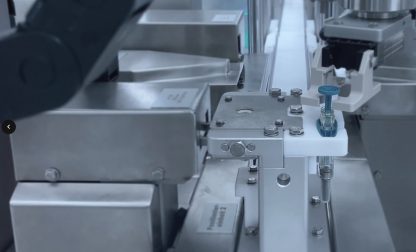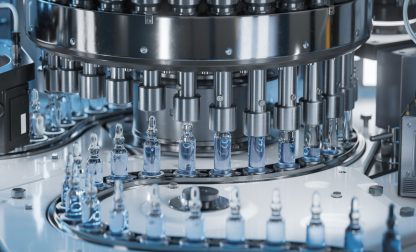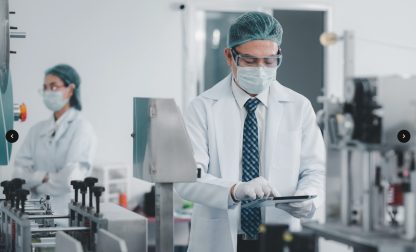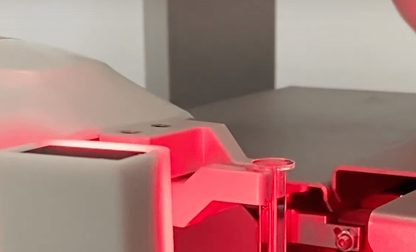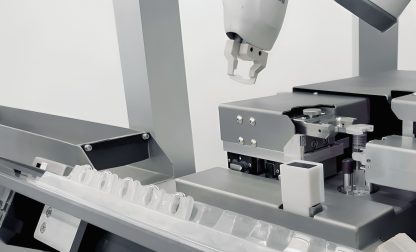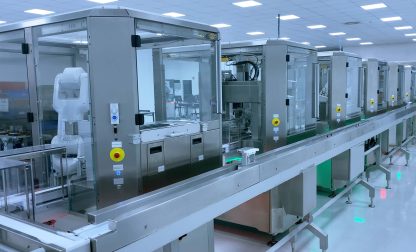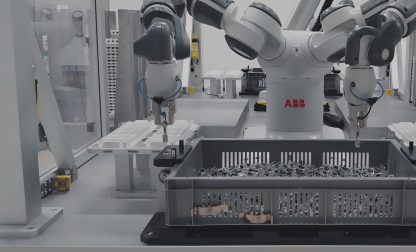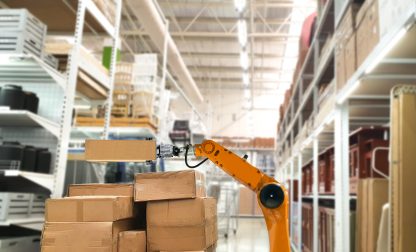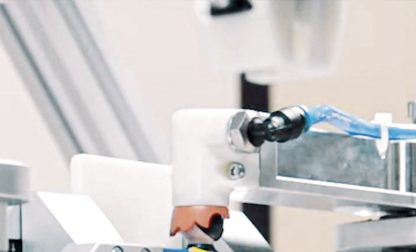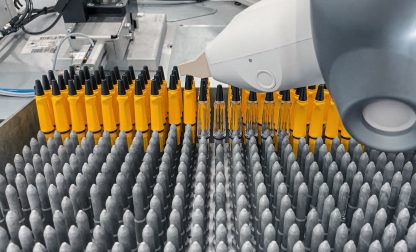Low volume manufacturing & automation solutions for increased efficiency
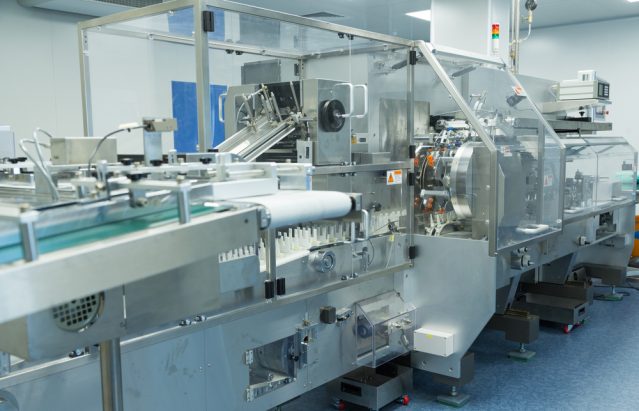
Various production strategies have evolved to address the diverse needs of industries and consumers. Among these manufacturing strategies, Low Volume Manufacturing (LVM) stands out as a vital approach, especially when customization, speed, and adaptability are of the essence.
In this article, we will look at the field of low volume manufacturing, its application in the market, the advantages as well as the challenges in terms of efficiency and costs. This is where ESSERT Robotics comes in with innovative solutions for High Mix / Low Volume manufacturing.
What is Low Volume Manufacturing?
Low Volume Manufacturing (LVM) represents a production method that focuses on producing goods in limited quantities. Unlike mass production strategies that result in vast amounts of standardized products, LVM refers to specific niches, often producing small batches that range from a handful to several thousand units.
Low Volume vs. High Volume Manufacturing
While mass production, often referred to as high volume production, leans heavily on producing large quantities of uniform products to capitalize on economies of scale, LVM is about flexibility. LVM’s strength lies in its ability to pivot swiftly, adapt to changing market requirements, and serve specialized customer needs without the need for extensive reconfiguration.
In contrast, mass production setups, with their bulk output, might struggle when rapid changes in production are necessary. Large facilities operating under mass production principles generally rely on vast machinery and systems that, while efficient for their purpose, can be cumbersome to modify.
Low volume manufacturing benefits from flexible systems. Therefore, the production strategy is also called High Mix / Low Volume manufacturing. It refers to the high level of variable output, i.e. different product variants, or product design changes, at lower volumes.
Low volume production in today’s market
With the manufacturing world moving towards more personalized products and unique market segments, LVM is gaining significant traction. Industries ranging from electronics to life sciences have decided for LVM to successfully supply their unique clientele.
Prominent examples for low volume production are luxury goods or custom products – as they are defining for personalized medicine. Low volume medical device manufacturing is becoming more and more of an issue with advanced therapies personalized to the individual patient.
Furthermore, LVM is often the go-to choice when new products are being introduced to the market, when customization is critical, or when the demand doesn’t justify a mass production setup.
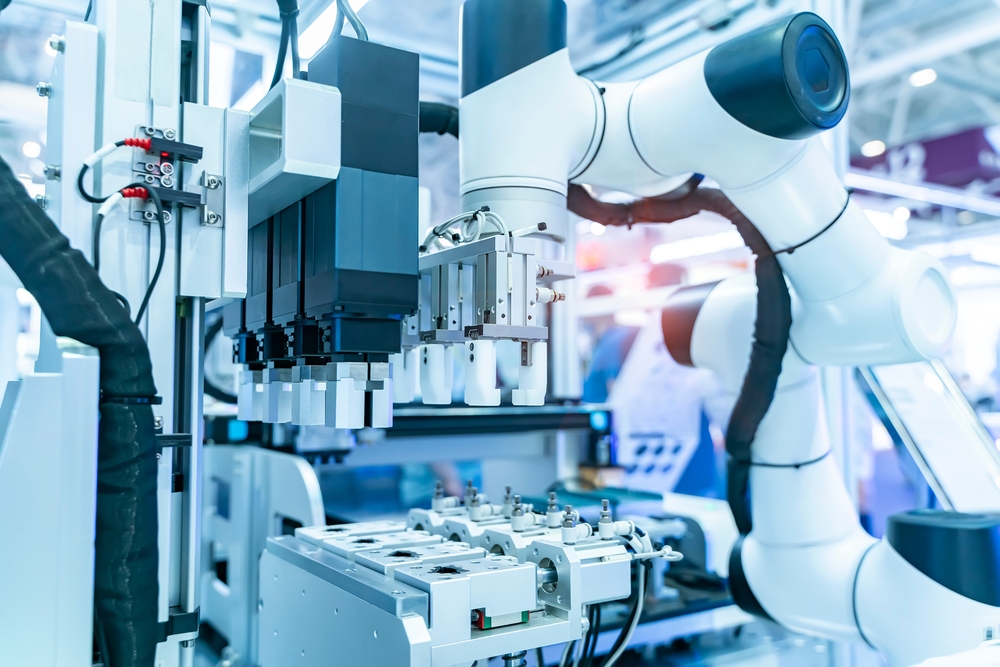
Benefits of low volume manufacturing
Low volume manufacturing is not suited to all types of products or markets, but its benefits have made it an interesting choice for many industries.
Strategic market entry
With LVM, businesses can produce a limited batch of products to test the waters. This allows them to gather essential market feedback without the risks and costs associated with a full-fledged production run. Upon gauging market response, LVM provides the flexibility for iterations based on consumer feedback, leading to a more polished and accepted final product.
Rapid prototyping
When developing new products, companies often produce prototypes for testing. LVM offers a way to do product development in a cost-effective manner. Instead of committing to producing vast quantities, businesses can produce limited batches, mitigating potential financial setbacks.
Time to market
LVM usually entails shorter lead times, allowing businesses to introduce their products to the market faster than through traditional manufacturing methods. In sectors where being first-to-market can be a game-changer, LVM offers a significant competitive advantage. With shorter production times, businesses can respond to market demands, trends or supply chain disruptions promptly, seizing opportunities ahead of competitors.
Enhanced customization capabilities
Producing in small quantities offers the possibility to react to specific customer needs. Whether it’s custom designs, features, or functionalities, businesses can tailor their products to meet the unique requirements of niche markets.
Challenges of low volume manufacturing
Embracing a low volume manufacturing approach requires manufacturers to confront certain complexities and considerations. As industries transition to more specialized manufacturing practices, it becomes crucial to be aware of these challenges and strategize accordingly.
Economies of scale
One of the primary challenges of LVM is the absence of bulk purchasing power. High-volume manufacturing often benefits from economies of scale, resulting in reduced per-unit costs. LVM, due to its smaller scale, might miss out on these discounts, leading to potentially higher production costs.
Supplier relationship management
Low volume production often requires a broad spectrum of parts and materials, each potentially coming from different suppliers. Managing multiple vendor relationships, ensuring timely deliveries, and maintaining high-quality standards can become complex and time-consuming.
Operational challenges
Adapting production lines for varied products in low volume production can be time- and cost intensive. Efficiently transitioning between product runs without causing significant downtime is a challenge that demands proper planning and expertise, as well as flexible manufacturing facilities.
In light of these challenges, manufacturers need to be proactive, leveraging technological advancements. By addressing these challenges head-on, businesses can truly unlock the potential of low volume manufacturing.
Solutions for efficient low volume manufacturing
To overcome the challenges and take full advantage of the benefits, innovative, efficient production solutions are needed. This is where ESSERT Robotics comes in, as flexible automation solutions can take low volume manufacturing to a new level.
The role of automation
Automation, particularly in High Mix / Low Volume (HMLV) scenarios, directly addresses the intricacies of rapidly evolving production landscapes. With the capacity to seamlessly streamline manufacturing processes, it enables quick changeovers to the next project, aided by the adoption of modular setups.
This ensures streamlined operations and drives significant cost efficiencies. By diminishing labor costs and channeling resources towards critical production facets, automation stands out as an important tool.
Automation solutions for the High Mix / Low Volume sector are rare. At ESSERT Robotics, we have committed ourselves to this topic in order to be a market pioneer in providing innovative solutions for industries such as medical device assembly or electronics manufacturing.
High Mix / Low Volume manufacturing in medical device assembly
LVM is intrinsically linked with High Mix. The ESSERT MicroFactory is designed for this High Mix / Low Volume production approach. Consisting of multiple ADVANCED Robotic Workstations, it stands for autonomous and precise production processes.
In medical device assembly, for example, efficiency and precision are of high importance. The MicroFactory emerges as solution, particularly tailored for the small-batch production of medical devices such as syringes, PENs, and auto-injectors.
Constructed from stainless steel, the MicroFactory is GMP compliant and designed with a modular set-up to quickly switch between products. Operators benefit from short setup time and quick turnaround when they switch between variants. The streamlined standardized process modules enable manufacturers to freely define assembly processes.
These process modules also come with the advantage of pre-validation, allowing them to be swiftly commissioned, rigorously tested, and promptly deployed. This makes it easier to scale from a prototype setting to full-scale production.
Driving the heart of this sophisticated machining is the ESSERT OS operating system. Its graphical user interface is intuitive and places unparalleled control at the user’s fingertips.
